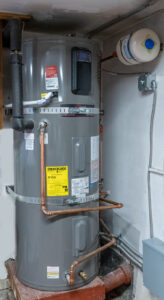Water Heater Replacement
A water heater may start to develop problems, such as a leak, that require replacement. If the repair costs will exceed the value of the unit, it may make sense to invest in a new one. Nonetheless, it’s important to follow proper steps to ensure your new water heater will last for years to come. In this article, we’ll discuss what to do after water heater replacement in order to prevent future issues and keep your family safe.
The first step after replacing your water heater is to drain it. You should use a garden hose to do this. Draining the tank will allow you to remove any sediment buildup that has collected inside of it. This can cause the metal to rust, which will shorten the life of your new water heater.

Once the water heater replacement has been drained, you can begin installing your new one. It is essential that you take your time during this process in order to ensure that the water heater is installed properly. To do this, follow the instructions provided by the manufacturer of your new water heater. It is also a good idea to have an extra set of hands available, as water heaters are very heavy.
What to Do After Water Heater Replacement
After you have completed the installation, it is important to test the connections and gas line. A plumber can help you do this. If any of the joints leak, you can tighten them or reseal them with pipe joint compound. You should also check the temperature and pressure relief valve discharge tube to ensure that it leads to a drain. If it doesn’t, you should install a new drainage tube or connect it to a drain in the house (or outside, where permitted).
If you have a gas water heater, it is critical to test for gas leaks before you turn it on. If you don’t, you could experience a dangerous condition known as a “dry fire”. To do this, close all the doors and windows in your home, open a hot water faucet until it starts to flow, and then move a lit match around the edge of the draft hood on top of the water heater. The smoke should draw up the vent pipe. If it doesn’t, you should call a licensed plumber right away to inspect and correct the problem.
Once you have tested all of the connections and made any necessary adjustments, you can turn on your new water heater. Before doing so, however, you should call a plumbing inspector to check your work. Then, you can follow the manufacturer’s directions to light the pilot light and set the temperature. Lastly, it’s a good idea to check for any leaks by brushing a 50-50 mixture of dishwashing liquid and water over the connections. If they bubble, you should clean and tighten the joints. You should also clean the outside of the tank, and install a new anode rod to prevent rusting.